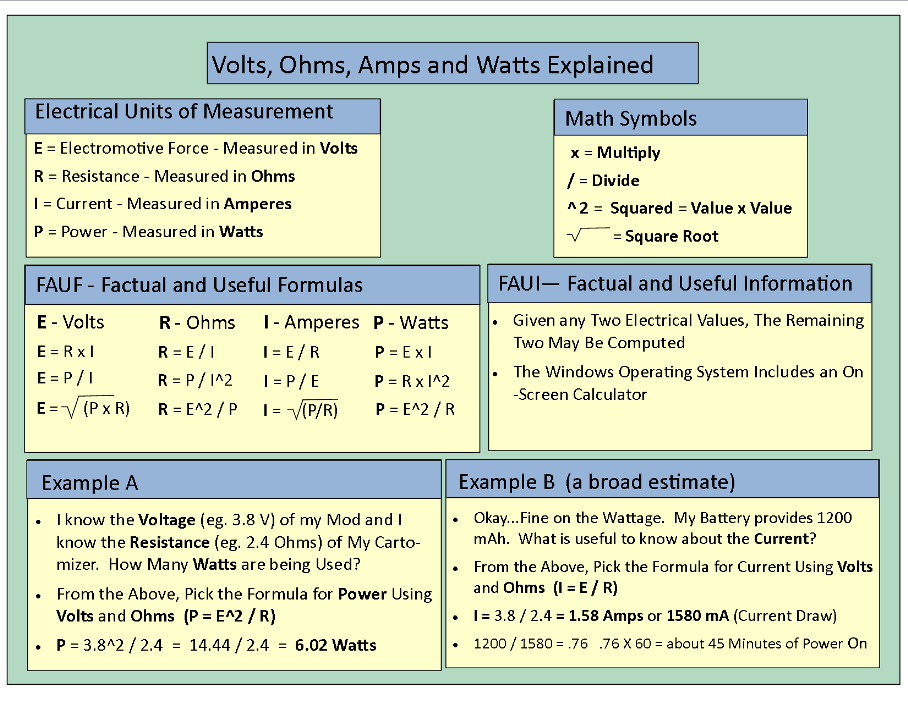I found one very old post that promised to explain in understandable terms this as it works with duals but didn't.
I know two 3Ω coils in parallel reads as a 1.5Ω atty and each coil heats like a 3Ω. I know voltage stays consistent through the circuit.
What I can't find is what goes on with watts to predict what I'll like dripping a certain liquid on a DC (it's seems as though watts may get divided so if I liked one 3Ω coil with a certain liquid at 5w I'll like two 3Ω coils at 10w, but that could be because of the time a lower wattage takes to heat two coils up).
What happens with amps?
What really confuses me about the amps is any way I look at it I see a free lunch with the massive amount of heating area that two 3Ω coils provide but read 1.5Ω. The only payment for lunch I can see right off is it takes longer to heat so there's more firing time. Is that the only cost?
I know two 3Ω coils in parallel reads as a 1.5Ω atty and each coil heats like a 3Ω. I know voltage stays consistent through the circuit.
What I can't find is what goes on with watts to predict what I'll like dripping a certain liquid on a DC (it's seems as though watts may get divided so if I liked one 3Ω coil with a certain liquid at 5w I'll like two 3Ω coils at 10w, but that could be because of the time a lower wattage takes to heat two coils up).
What happens with amps?
What really confuses me about the amps is any way I look at it I see a free lunch with the massive amount of heating area that two 3Ω coils provide but read 1.5Ω. The only payment for lunch I can see right off is it takes longer to heat so there's more firing time. Is that the only cost?

